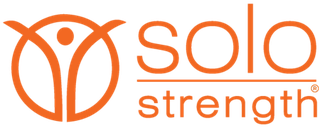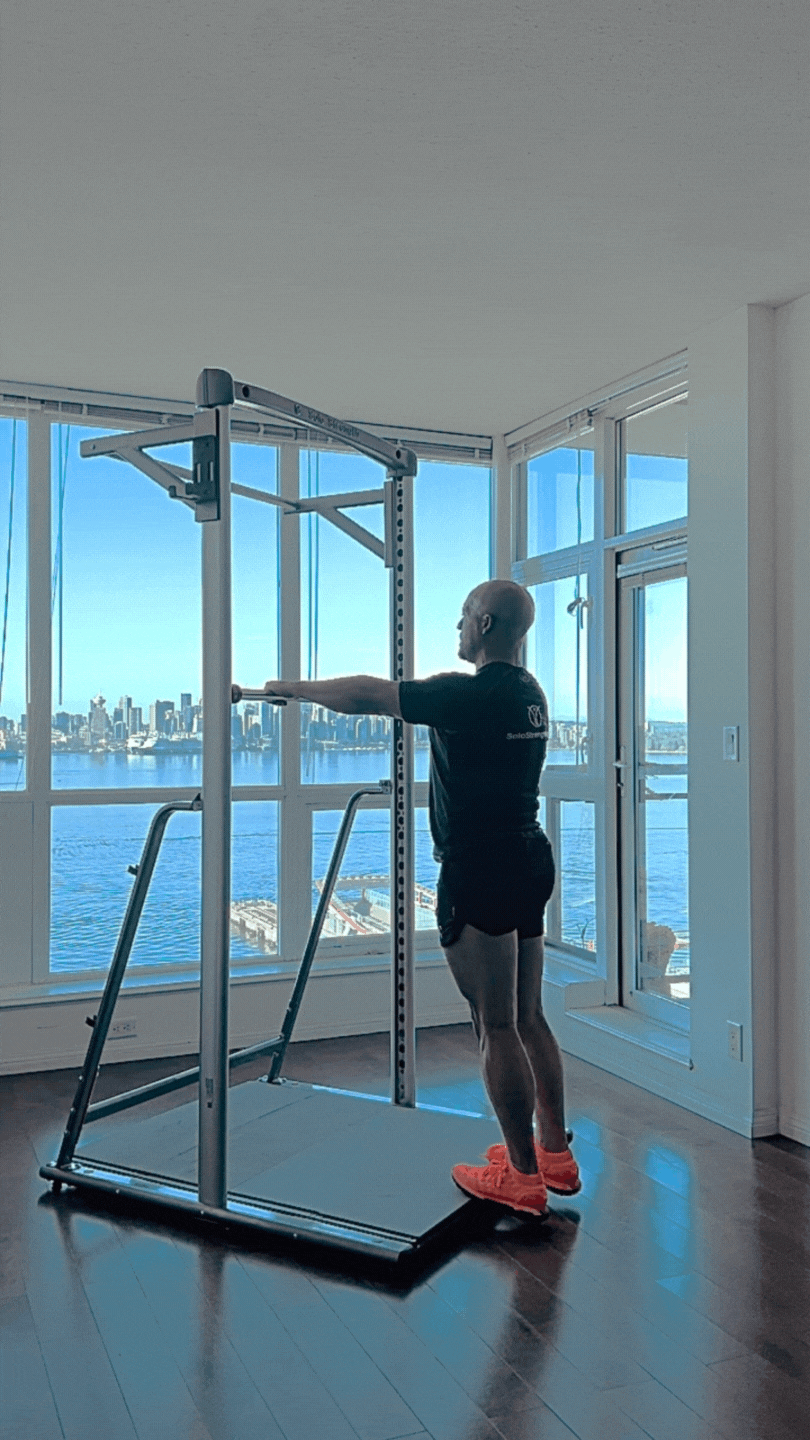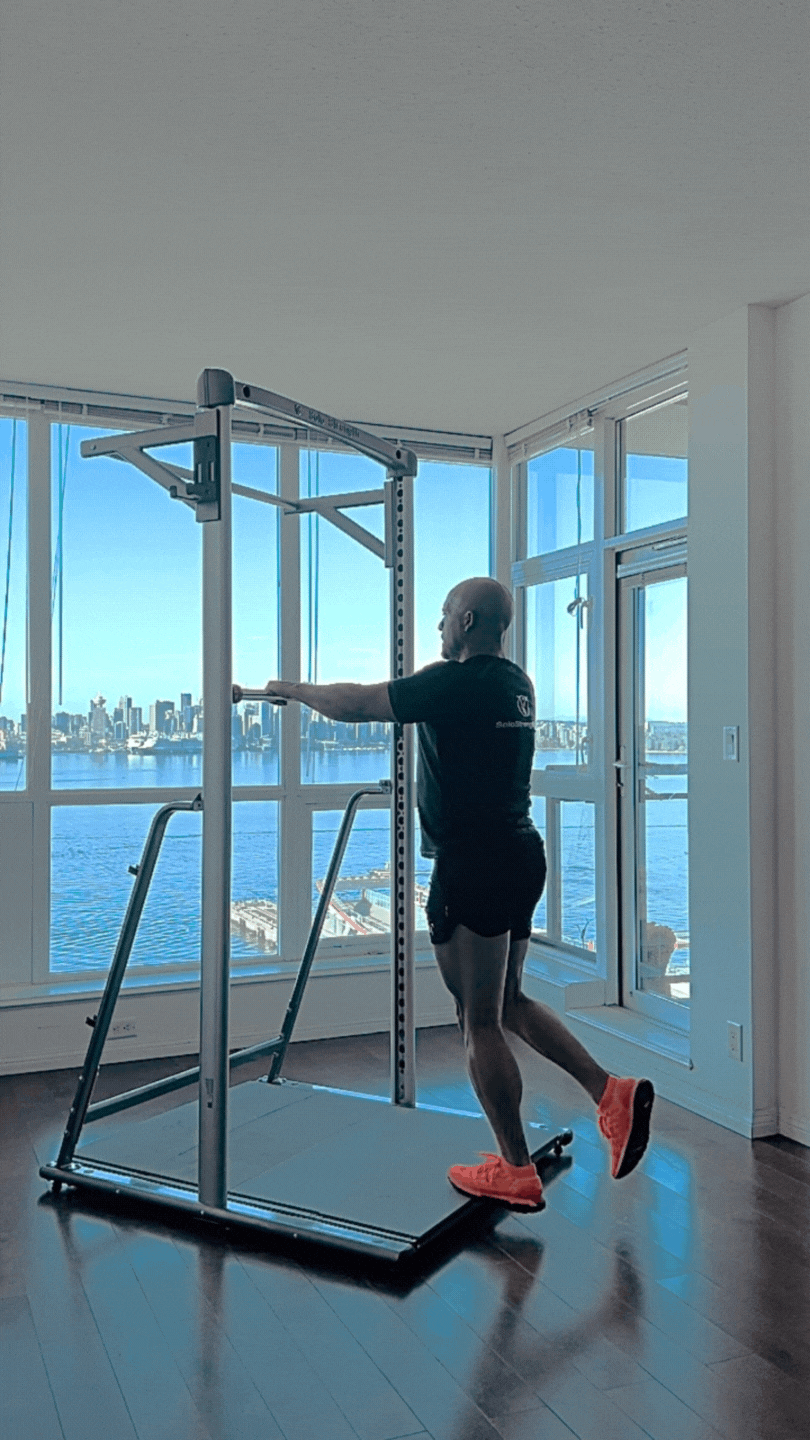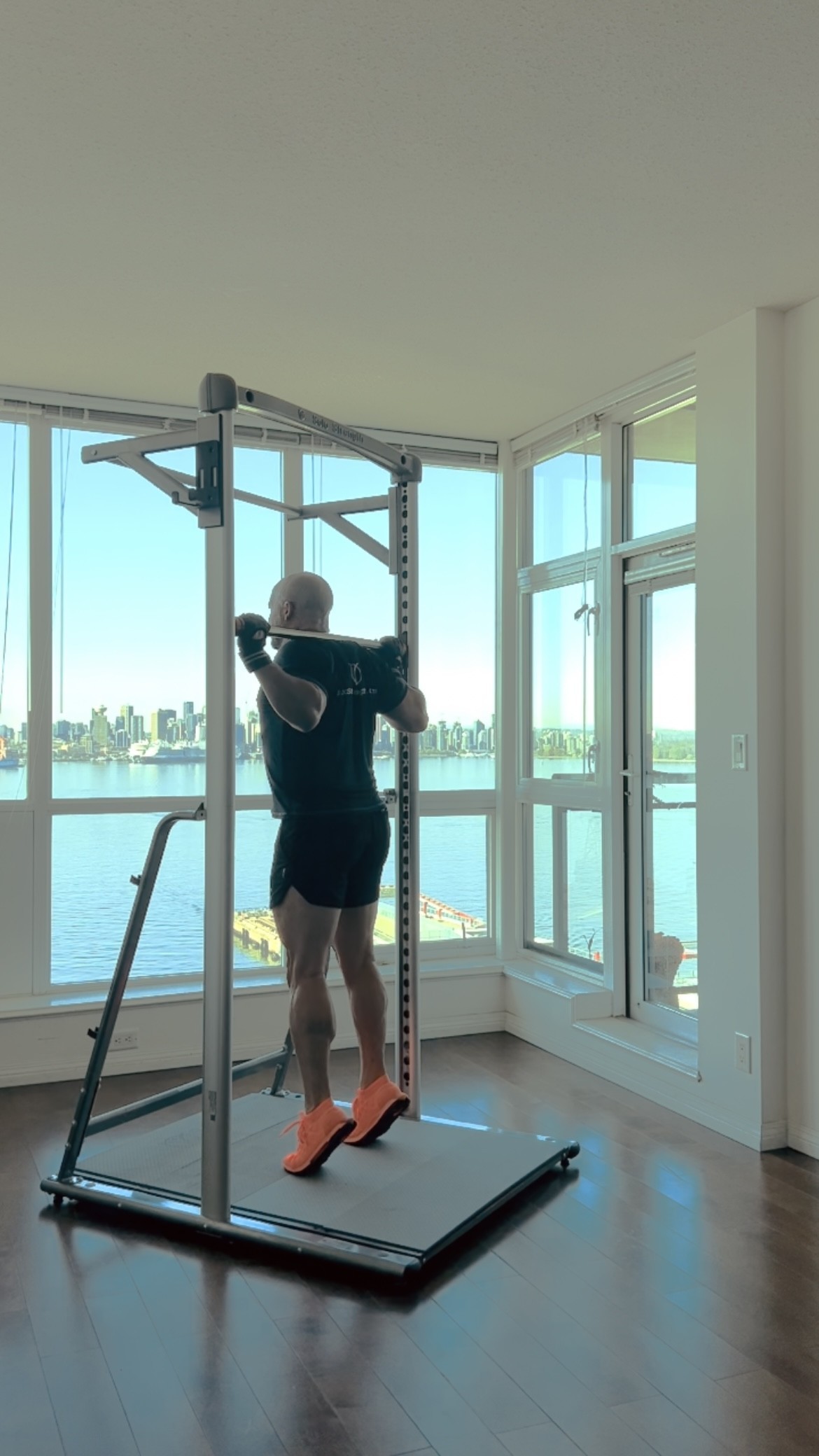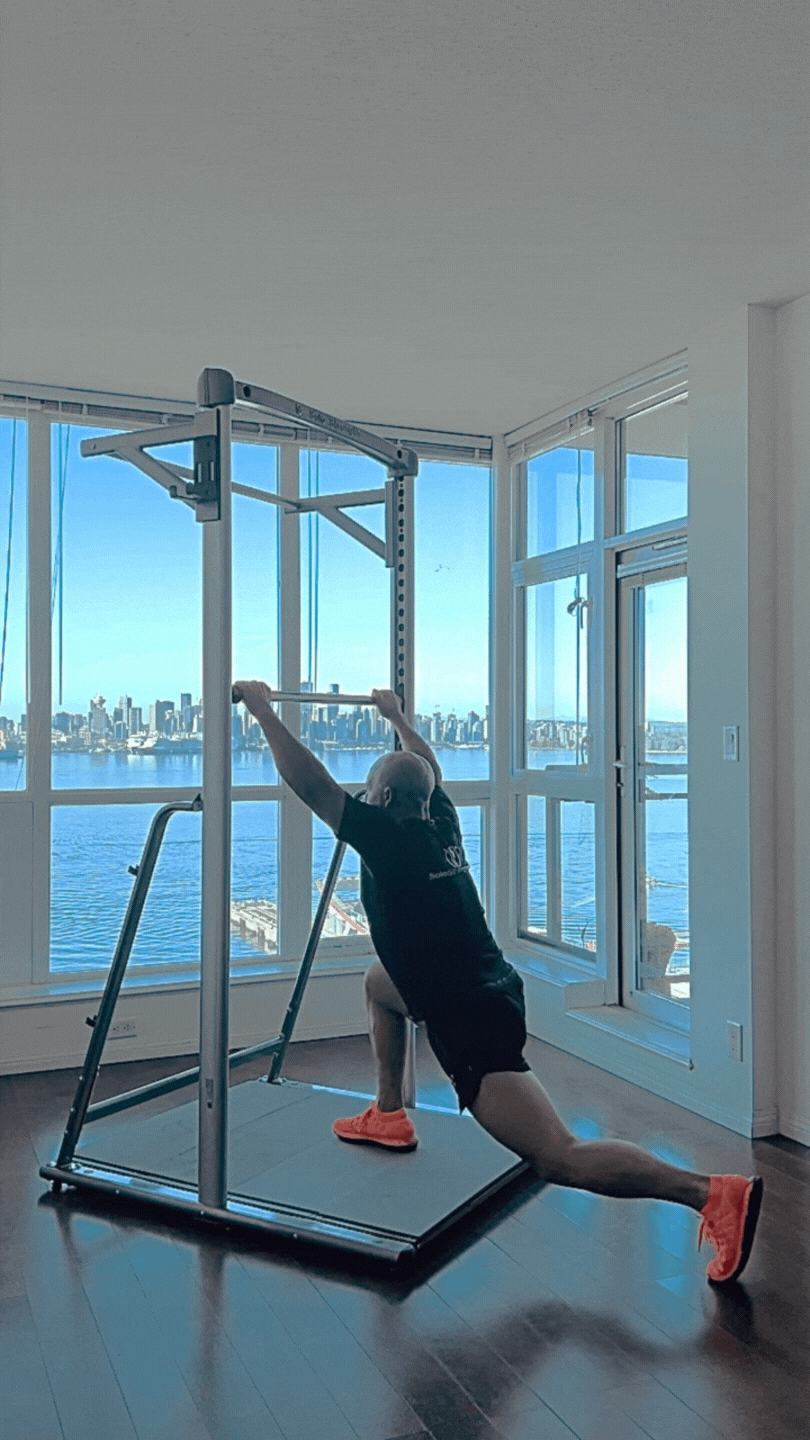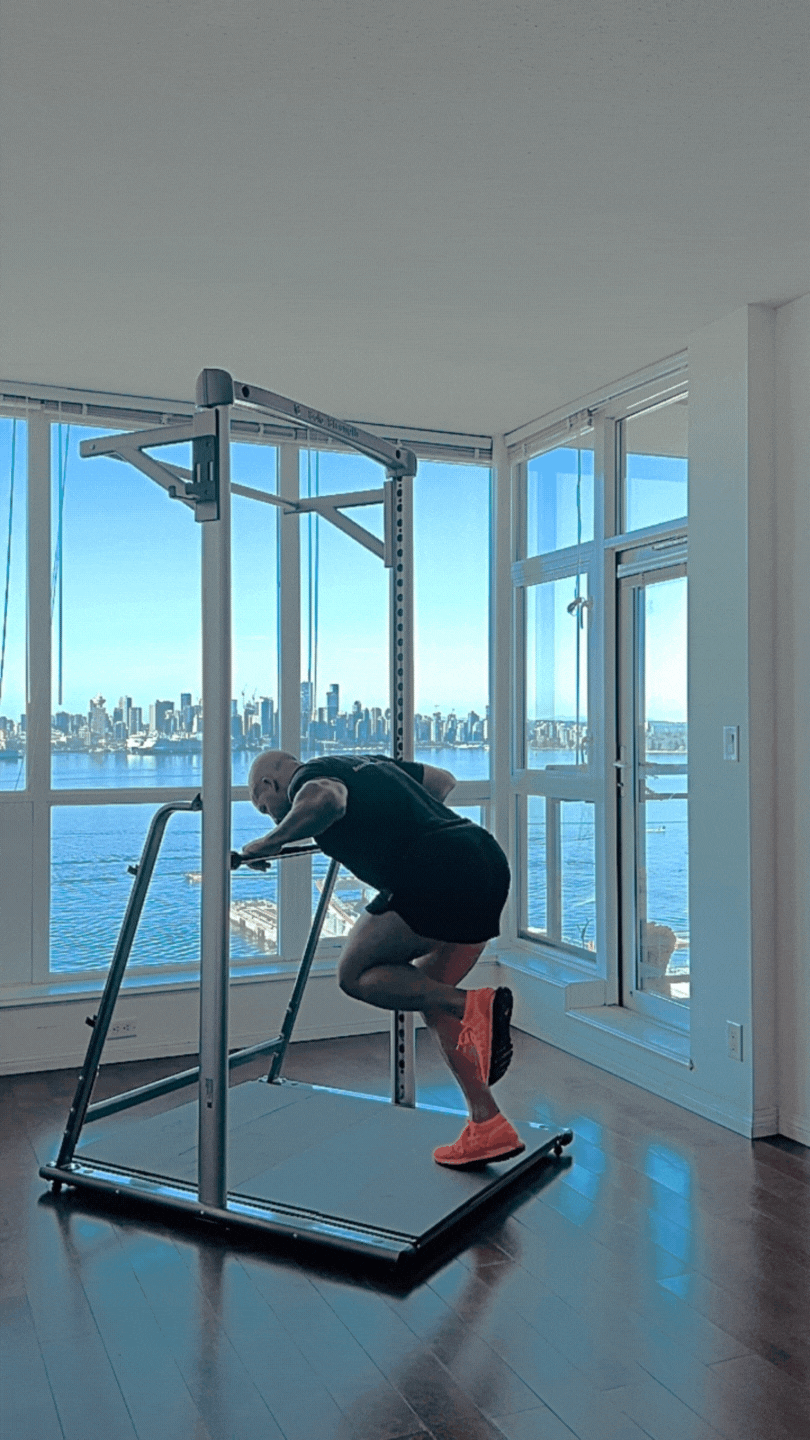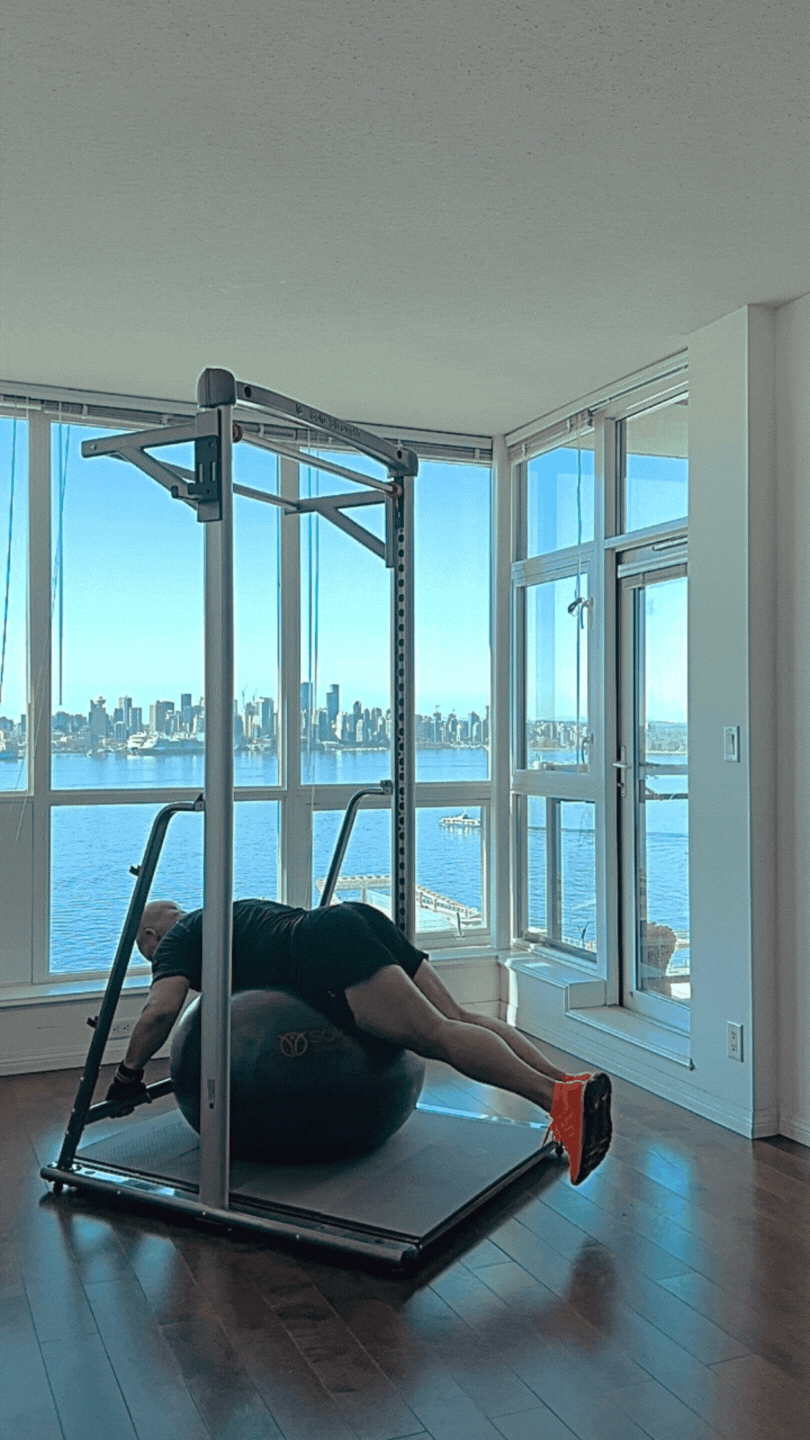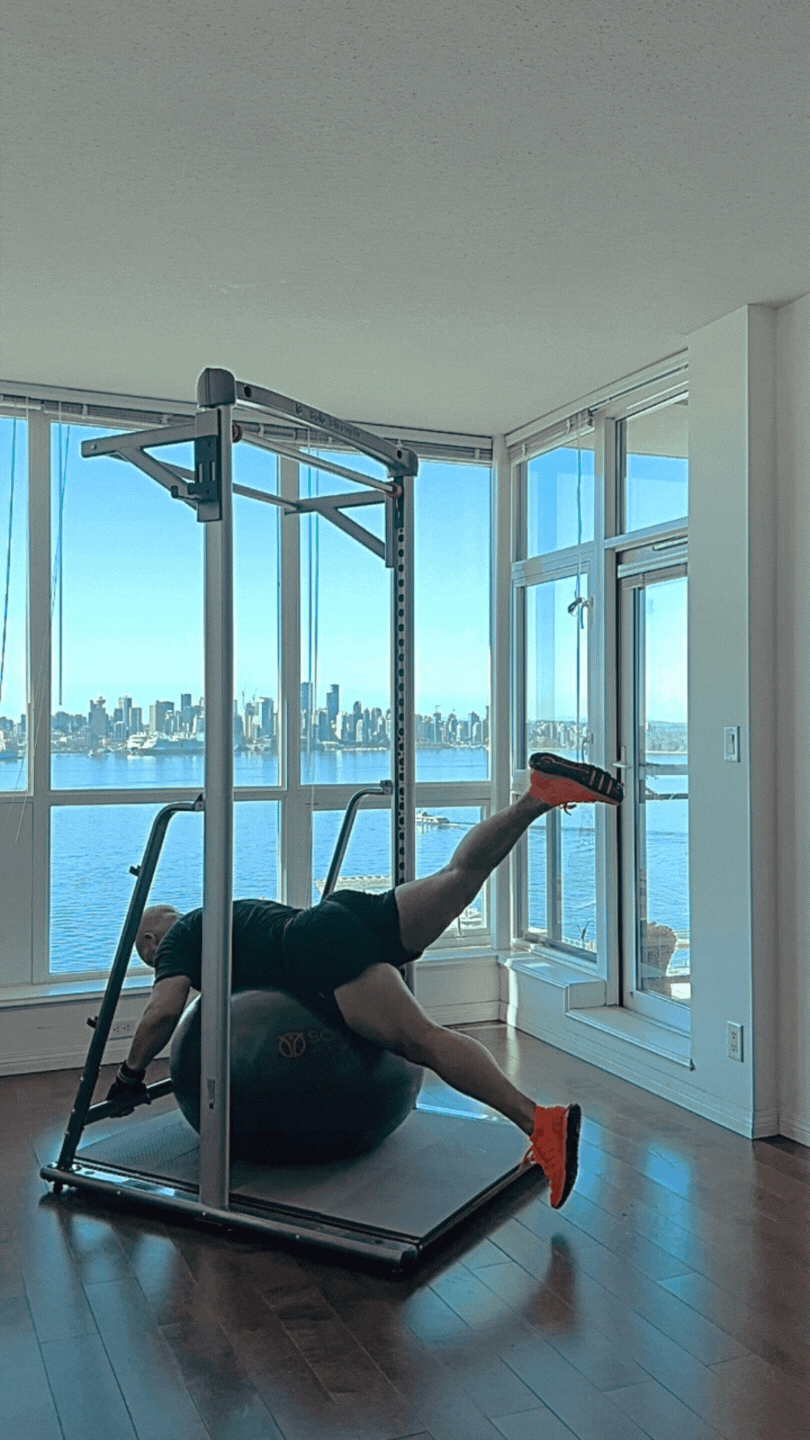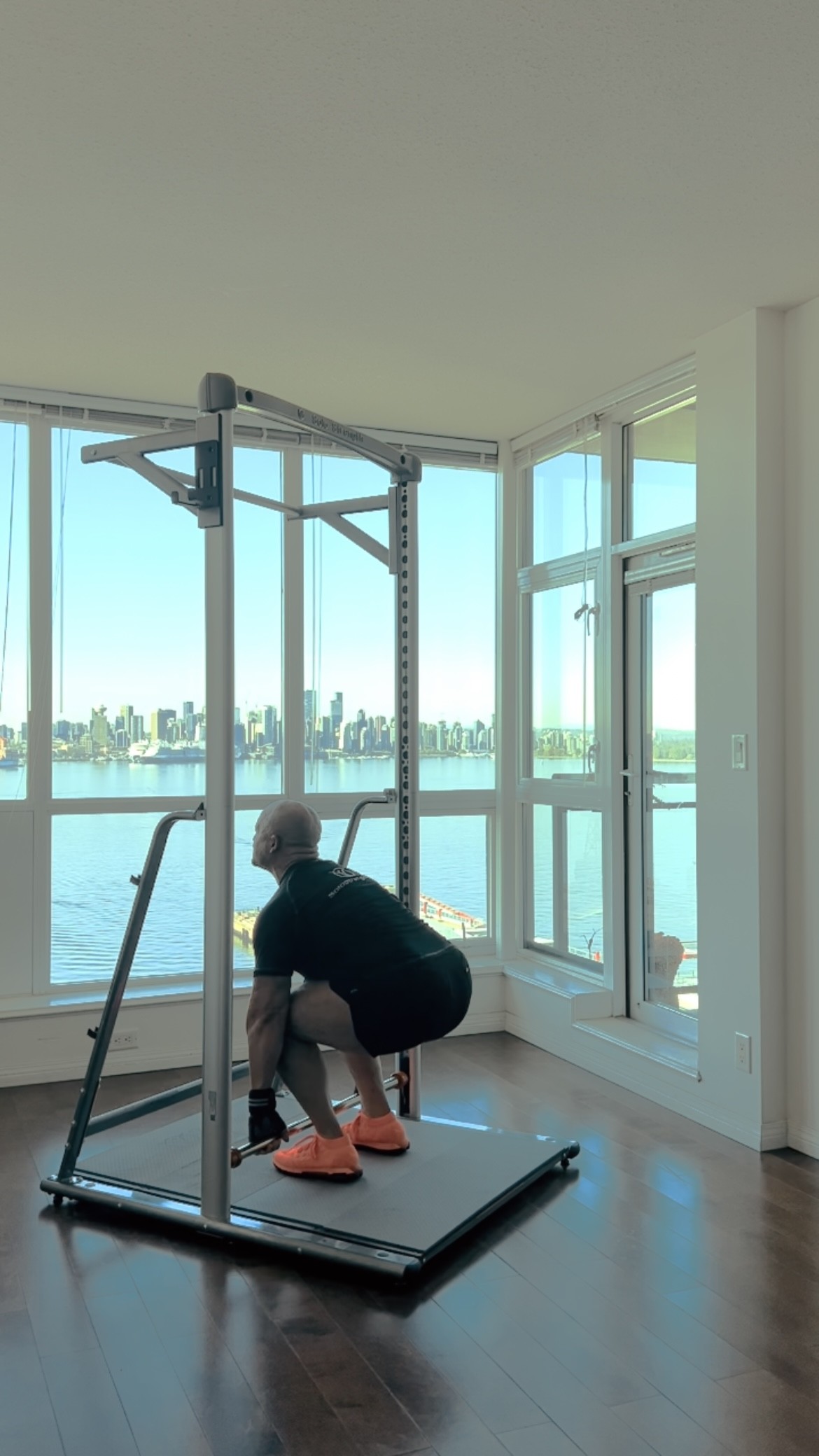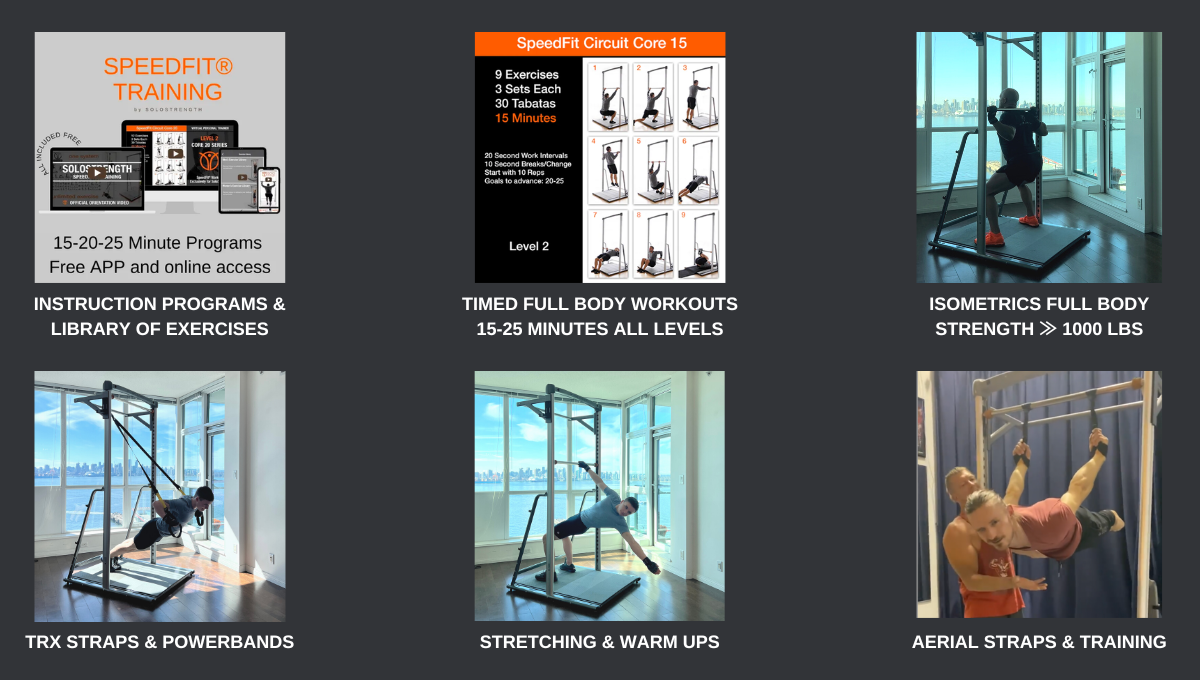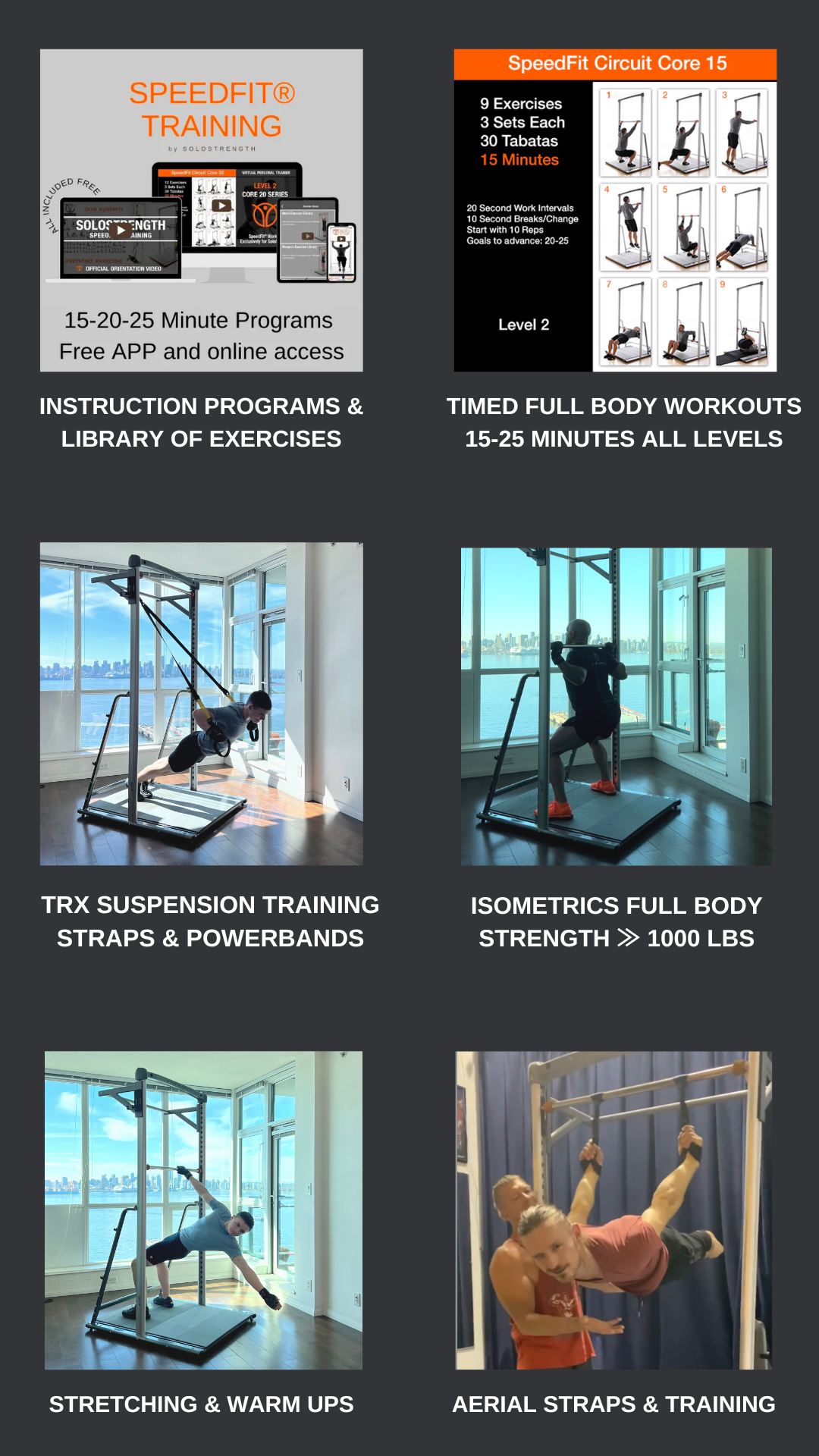Build Killer Calves With These 5 Exercises (Plus 3 Extras)
Part of the SoloStrength Body Weight Exercise Series
Introduction
If you’re looking to grow the world's most underdeveloped muscle, the calves, you’ve come to the right place. The reason why they are so difficult to train is that they are quite strong regardless of their size. Think about how often you walk. It’s your calves that propel you forward. All those steps have made them very efficient muscles, requiring more effort and reps than other muscles right from the start.
The calf is a combination of two muscles: an inner Soleus and an outer Gastrocnemius. One important thing to know is the gastrocnemius is divided into two muscular heads: there is a medial head, closer to the middle of the body, and an outer head, further away from the middle. Although it’s not always necessary, each can be targeted with specific exercises to improve muscle definition.
Many think they don’t have the right genetics to grow large calves, but like any other muscle, they will grow if given the right stimulus. Remember how often this muscle group in particular gets used (daily) and adjust your workouts accordingly. If you’re not seeing growth, you need more reps and intensity.
Before we get into the exercises, why would someone want to train their calves?
Better aesthetics and proportions.
Decreased risk of injury.
Better athleticism.
More power with running and jumps.
Better blood supply to the feet - no more cold feet.
Calf Raises
How to them:
Stand up straight with good posture, feet pointed forward.
For balance and support, find something to hold onto.
Push off the ground through your toes until you can’t go any higher.
Relax and let yourself down slowly.
Start with 3 sets of 10-20 reps.
This will target all muscles making up the calf equally. As you get stronger, you will need to increase your reps or sets. The next two exercises are variations of the calf raise.
Calf Raises, Toes In
How to them:
Stand up straight, but this time point your toes slightly inward.
Follow the same steps as you would for standard calf raises.
This is a great exercise to work the medial, or inner, calf muscles.
Calf Raises, Toes Out
How to do it:
Stand up straight, but this time point your toes slightly outward.
Follow the same steps as you would for standard calf raises.
This is a great exercise to work the lateral, or outer, calf muscles.
Single-Leg Calf Raises
How to them:
You will need to stabilize yourself more with this exercise than with standard calf raises..
Find something sturdy to hold on to, like the SoloStrength Ultimate Training Station.
Bend the knee of the leg that isn’t working so it’s off the ground.
Push off on the working leg so that your foot is on your toes.
Relax and let yourself down in a controlled manner.
You may notice your ankle is not quite as stable in this exercise as in the last one. It’s important that you keep your movements controlled so that you don’t roll and injure an ankle, which can happen if you push too high untrained.
Calf Isometric Holds
This is a simple exercise but requires the correct equipment to perform it. The SoloStrength Ultimate Training Station is perfect for this.
How to do it:
Set the height of the SoloStrength Ultimate above shoulder height by 2-3 inches.
Get under the bar and grab onto it as if you would perform a squat, and push up against the bar through your toes and ankles.
Hold for 30 seconds, or as long as you can, while maintaining tension into the bar.
Repeat 3 times.
This strengthens your calves in the shortened position, but you can also train them in the lengthened position.
You will need to set the bar lower than in the shortened position so that the bar comes to shoulder height.
Repeat the same process.
This is a very useful exercise to stimulate muscle growth, particularly when you feel that you’ve plateaued. After a few weeks of doing this once or twice per week, you should see a noticeable improvement in strength, endurance, and coordination of movements.
What about the Anterior Tibs?
For those rare breeds that become serious about training calves, they will notice another neglected muscle: the tibialis anterior, the muscle that helps you lift your toes up and out. This is the source of pain for many runners suffering from shin splints. Another benefit is that strengthening the tibialis anterior allows for better calf contraction.
Seated Toe Raises
How to do them:
While sitting, raise your toes and you should feel a contraction of the tibialis anterior.
Aim for 3 sets of 20, or as many as you can do.
Ideally, you want slow reps with a contraction taking 2 seconds, a 1-second pause at the top, and slowly relax your toes down.
Heel Walks
How to do them:
Simply walk on your heels with your toes raised.
Do this for 3 sets of 20 reps (steps).
Increase reps and sets as your progress.
Wall Toe Raises
How to do them:
Like the seated toe raise, but instead of being seated, you are standing and leaning with your back against the wall.
Feet should be a few inches away from the wall.
Raise your toes slowly, pause at the top, then slowly relax on the way down.
Repeat for 3 sets of 20, or as many as you can do.
Tips
Use progressive overload. This means gradually increasing the weight, repetitions, duration, or intensity of the movement. This stimulates the muscles to grow stronger. If you keep this up, you will inevitably grow stronger over time. You want to aim to do better in today’s workout than you did in the last one.
Track your workouts. You can’t beat yesterday if you can’t remember what it was. Write it down, either in a journal or get an app to track the workout.
Increase intensity. To do this, break down the movement in stages (contraction, pause, relaxation, pause) and slow them down. Contraction and relaxation should last up to 4 seconds and the pauses should be 1-2 seconds. This slowly, controlled movement should increase the difficulty (and the resulting growth) dramatically.
Control the movement. Do not swing weights or your body around. It is unlikely you will injure yourself if you slow your movements and control your body in the movements. Using momentum to swing the weight or yourself is asking for an injury.
Maintain good form and posture. Head up straight. Shoulders forward, up, back, then down. Chest up and out. Abs flexed, with your hips tucked under them. Feet shoulder width apart, unless squatting, when you can go wider. Proper form & posture is critical not only to avoid injury but to stimulate good muscle contraction.
What’s Next?
Do these exercises 2-3 times per week for 4 weeks and let us know how you improved. You WILL see growth. Ready to move on to something else?
Read our next article on the best exercises for Quads and Adductors.
View more SoloStrength SpeedFit® Training Here.
Or navigate to other articles in this series:
Posted: February 12, 2023
Exclusive for SoloStrength Lifestyle Products.
More and more with SoloStrength...
Choose Your Perfect Ultimate Strength And Stretching Training Station:
#1 Bodyweight Home Gym Workout Systems
NEW Adjustable Pull Up Bar
Calisthenics Workouts
Isometrics Equipment
Bodyweight Exercise Equipment

SoloStrength Adjustable Height Bar Changes Everything
✓ 3 Second Bar Height Changes
✓ No Setup Time To Start Your Workout
✓ Full Body Satisfying Workouts
✓ You Just Feel Awesome Every Workout
✓ Calisthenics, Stretching, Isometrics
✓ Circuits, Cardio Functional, Strength
✓ Get FIT Faster. Stay FIT Forever 💪
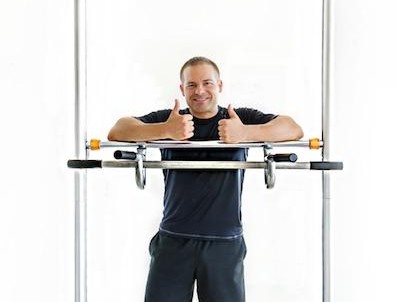
Welcome! Take this opportunity now to SIGN UP FOR MORE!
You can join over 50,000 subscribers worldwide and 1000s of customers who are taking control of their fitness and getting more from their workouts with SoloStrength® training systems!
